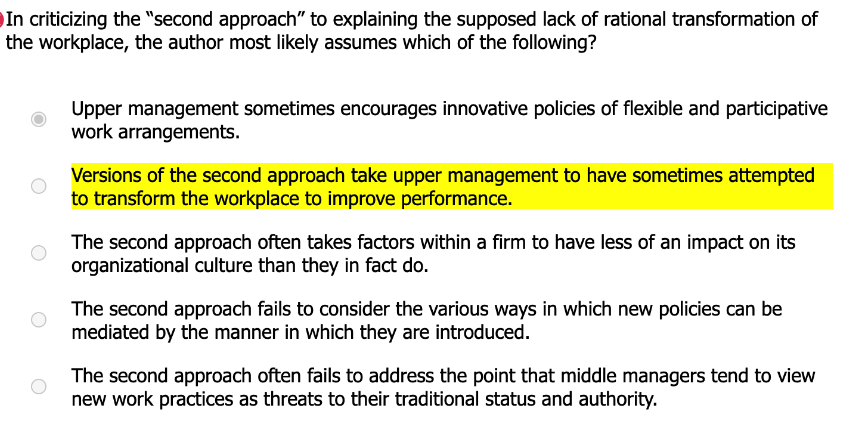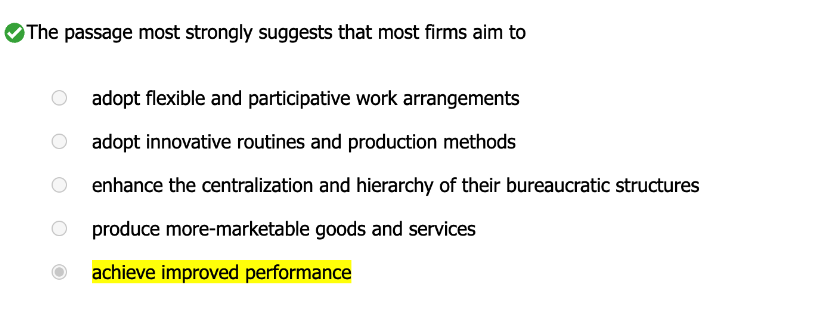Events & Promotions
|
|

GMAT Club Daily Prep
Thank you for using the timer - this advanced tool can estimate your performance and suggest more practice questions. We have subscribed you to Daily Prep Questions via email.
Customized
for You
Track
Your Progress
Practice
Pays
Not interested in getting valuable practice questions and articles delivered to your email? No problem, unsubscribe here.
- Nov 20
07:30 AM PST
-08:30 AM PST
Learn what truly sets the UC Riverside MBA apart and how it helps in your professional growth - Nov 22
11:00 AM IST
-01:00 PM IST
Do RC/MSR passages scare you? e-GMAT is conducting a masterclass to help you learn – Learn effective reading strategies Tackle difficult RC & MSR with confidence Excel in timed test environment - Nov 23
11:00 AM IST
-01:00 PM IST
Attend this free GMAT Algebra Webinar and learn how to master the most challenging Inequalities and Absolute Value problems with ease. - Nov 25
10:00 AM EST
-11:00 AM EST
Prefer video-based learning? The Target Test Prep OnDemand course is a one-of-a-kind video masterclass featuring 400 hours of lecture-style teaching by Scott Woodbury-Stewart, founder of Target Test Prep and one of the most accomplished GMAT instructors.
Kudos
Bookmarks
Question 1
B
Be sure to select an answer first to save it in the Error Log before revealing the correct answer (OA)!
Difficulty:
 95%
(hard)
95%
(hard)
Question Stats:
38% (03:24) correct 62%
(03:24) wrong
62%
(03:24) wrong  based on 642
sessions
based on 642
sessions
History
Date
Time
Result
Not Attempted Yet
Question 2
E
Be sure to select an answer first to save it in the Error Log before revealing the correct answer (OA)!
Difficulty:
 45%
(medium)
45%
(medium)
Question Stats:
52% (00:55) correct 48%
(01:01) wrong
48%
(01:01) wrong  based on 822
sessions
based on 822
sessions
History
Date
Time
Result
Not Attempted Yet
Question 3
D
Be sure to select an answer first to save it in the Error Log before revealing the correct answer (OA)!
Difficulty:
 5%
(low)
5%
(low)
Question Stats:
79% (00:32) correct 21%
(00:50) wrong
21%
(00:50) wrong  based on 820
sessions
based on 820
sessions
History
Date
Time
Result
Not Attempted Yet
Question 4
E
Be sure to select an answer first to save it in the Error Log before revealing the correct answer (OA)!
Difficulty:
 5%
(low)
5%
(low)
Question Stats:
87% (00:52) correct 13%
(01:12) wrong
13%
(01:12) wrong  based on 792
sessions
based on 792
sessions
History
Date
Time
Result
Not Attempted Yet

GMAT-Club-Forum-jxn9gzhx.png [ 349.21 KiB | Viewed 3613 times ]

GMAT-Club-Forum-ppf0g620.png [ 127.93 KiB | Viewed 3606 times ]

GMAT-Club-Forum-014u6vpg.png [ 53.8 KiB | Viewed 3601 times ]
Although a substantial body of evidence indicates that flexible and participative work arrangements make possible significant performance advantages over more traditional centralized and hierarchical structures, the proportion of businesses that have so transformed themselves remains quite small. Why, then, do firms that purport to be rationally acting organizations appear to resist the very methods that would best equip them to achieve their stated goals?
One line of analysis points toward the phenomenon of structural inertia, suggesting that organizations are "imprinted" with the conditions under which they were born, tending thereafter to cling to long-established routines, production methods, and identities. A second approach fastens on resistance to change among middle managers, who are said to view new work practices as threats to their traditional status and authority. A third approach suggests that because firms have tended to adopt innovations singly, rather than in clusters, the firms often fail to achieve far-reaching organization change.
Although each of these perspectives contains a partial truth, each one is limited. Analysis using the concept of structural inertia tends to emphasize the conservative aspects of organizational culture and to neglect inside factors as sources of change. While theories of managerial resistance have stressed the importance of within-firm political processes, they often endow upper levels of management with an omniscience and openness to egalitarian practices that upper-level managers do not possess. Finally, the last approach often views new practices as if they exist in a vacuum—as if they are unmediated by the manner in which they are introduced.
An alternative approach builds on developments within industrial sociology. The outcome of workplace change initiatives is shaped in large part by the social and organizational processes that unfold during the implementation of new work practices. In other words, workplace change is not akin to a surgical procedure performed under anesthesia. Rather, it constitutes a negotiated phenomenon in which the language and strategies that particular occupational groups employ can either blur or sharpen the boundaries that exist within the firm. Where workplace change fails to transform existing organizational patterns, the reasons may stem less from the nature of the innovations than from the processes that surround and shape their introduction.
One line of analysis points toward the phenomenon of structural inertia, suggesting that organizations are "imprinted" with the conditions under which they were born, tending thereafter to cling to long-established routines, production methods, and identities. A second approach fastens on resistance to change among middle managers, who are said to view new work practices as threats to their traditional status and authority. A third approach suggests that because firms have tended to adopt innovations singly, rather than in clusters, the firms often fail to achieve far-reaching organization change.
Although each of these perspectives contains a partial truth, each one is limited. Analysis using the concept of structural inertia tends to emphasize the conservative aspects of organizational culture and to neglect inside factors as sources of change. While theories of managerial resistance have stressed the importance of within-firm political processes, they often endow upper levels of management with an omniscience and openness to egalitarian practices that upper-level managers do not possess. Finally, the last approach often views new practices as if they exist in a vacuum—as if they are unmediated by the manner in which they are introduced.
An alternative approach builds on developments within industrial sociology. The outcome of workplace change initiatives is shaped in large part by the social and organizational processes that unfold during the implementation of new work practices. In other words, workplace change is not akin to a surgical procedure performed under anesthesia. Rather, it constitutes a negotiated phenomenon in which the language and strategies that particular occupational groups employ can either blur or sharpen the boundaries that exist within the firm. Where workplace change fails to transform existing organizational patterns, the reasons may stem less from the nature of the innovations than from the processes that surround and shape their introduction.
1. In criticizing the "second approach" to explaining the supposed lack of rational transformation of the workplace, the author most likely assumes which of the following?
A. Upper management sometimes encourages innovative policies of flexible and participative work arrangements.
B. Versions of the second approach take upper management to have sometimes attempted to transform the workplace to improve performance.
C. The second approach often takes factors within a firm to have less of an impact on its organizational culture than they in fact do.
D. The second approach fails to consider the various ways in which new policies can be mediated by the manner in which they are introduced.
E. The second approach often fails to address the point that middle managers tend to view new work practices as threats to their traditional status and authority.
A. Upper management sometimes encourages innovative policies of flexible and participative work arrangements.
B. Versions of the second approach take upper management to have sometimes attempted to transform the workplace to improve performance.
C. The second approach often takes factors within a firm to have less of an impact on its organizational culture than they in fact do.
D. The second approach fails to consider the various ways in which new policies can be mediated by the manner in which they are introduced.
E. The second approach often fails to address the point that middle managers tend to view new work practices as threats to their traditional status and authority.
2. The passage most strongly suggests that most firms aim to
A. adopt flexible and participative work arrangements
B. adopt innovative routines and production methods
C. enhance the centralization and hierarchy of their bureaucratic structures
D. produce more-marketable goods and services
E. achieve improved performance
A. adopt flexible and participative work arrangements
B. adopt innovative routines and production methods
C. enhance the centralization and hierarchy of their bureaucratic structures
D. produce more-marketable goods and services
E. achieve improved performance
3. The passage is primarily concerned with discussing
A. how firms have attempted to introduce flexible and participative work arrangements
B. why some firms are attempting to become less centralized and hierarchical
C. why firms should adopt flexible and participative work arrangements
D. why relatively few firms have fully adopted flexible and participative work arrangements
E. the contributions of industrial sociology to understanding innovative work practices
A. how firms have attempted to introduce flexible and participative work arrangements
B. why some firms are attempting to become less centralized and hierarchical
C. why firms should adopt flexible and participative work arrangements
D. why relatively few firms have fully adopted flexible and participative work arrangements
E. the contributions of industrial sociology to understanding innovative work practices
4. The author most strongly suggests that the success of an innovation designed to achieve organizational change depends mostly on
A. whether the innovation is implemented by middle management or upper management
B. whether, in the implementation of the innovation, all employees are made aware of the change
C. whether the innovation is implemented alone or with other innovations
D. the overcoming of resistance of middle management to the innovation
E. the overall favorability of the processes that surround and shape the implementation of the innovation
A. whether the innovation is implemented by middle management or upper management
B. whether, in the implementation of the innovation, all employees are made aware of the change
C. whether the innovation is implemented alone or with other innovations
D. the overcoming of resistance of middle management to the innovation
E. the overall favorability of the processes that surround and shape the implementation of the innovation
Official Mock 6





Attachment:
GMAT-Club-Forum-jxn9gzhx.png [ 349.21 KiB | Viewed 3613 times ]
Attachment:
GMAT-Club-Forum-ppf0g620.png [ 127.93 KiB | Viewed 3606 times ]
Attachment:
GMAT-Club-Forum-014u6vpg.png [ 53.8 KiB | Viewed 3601 times ]
Kudos
Bookmarks
Experts please help with Q1 and Q2. How to eliminate options?
Tia0001
Joined: 28 Mar 2023
Last visit: 17 Jun 2025
Posts: 10
Own Kudos:
Location: Mongolia
Schools: MIT '27 (A) Booth '27 (A$)
GMAT Focus 1: 645 Q87 V79 DI70 

GPA: 4
Kudos
Bookmarks
Hello KarishmaB, please could you help answer question 1?
I am having trouble finding the support for it in the passage. But my hunch is that this quote "While theories of managerial resistance have stressed the importance of within-firm political processes, they often endow upper levels of management with an omniscience and openness to egalitarian practices that upper-level managers do not possess." is where the answer is.
Does this mean that the fact that the 2nd approach endow the upper mgmt with an omniscience and openness to egalitarian practices somehow supports the fact that 2nd approach criticizes middle managers for their inertia.
I am having trouble finding the support for it in the passage. But my hunch is that this quote "While theories of managerial resistance have stressed the importance of within-firm political processes, they often endow upper levels of management with an omniscience and openness to egalitarian practices that upper-level managers do not possess." is where the answer is.
Does this mean that the fact that the 2nd approach endow the upper mgmt with an omniscience and openness to egalitarian practices somehow supports the fact that 2nd approach criticizes middle managers for their inertia.













